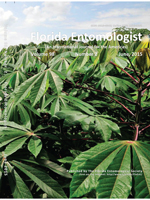In many animal species, females are faced with at least 2 reproductive options: independent or cooperative breeding. Some individuals in cooperative groups choose to help in rearing the broods of conspecific females. Through observations of how females of Polistes simillimus Zikán, 1951 (Hymenoptera: Vespidae) started new nests in the field, we investigated whether ecological constraints and the geographic variations explain group formation in this species. The founding of nests was studied between 1996 and 2000 in various localities of 2 states of southeastern Brazil. Weekly observations were carried out on 109 pre-worker nests. We kept track of 40 colonies in Minas Gerais State and 69 in São Paulo State, each started either by a single female or by an association of females. There was a chance that worker production would become numerically similar in both solitary and associative colonies in both states. An increased number of foundresses did not improve the chance of colony success in Minas Gerais State, but it improved this chance in São Paulo State, so that colonies each with 3 or more foundressess were always successful. In colonies in both states, nest cell productivity was higher with a greater number of associated females per nest. Females were able to start building nests alone, being the only reproductive, or 2 or more females could cooperate to found a nest, thus increasing worker production. However, the type of environment chosen to establish the nest (anthropogenic or natural) seemed to influence strongly the choice of the founding strategy.
How to translate text using browser tools
1 June 2015
Foundress Association in the Paper Wasp Polistes simillimus (Hymenoptera: Vespidae)
Fábio Prezoto,
Mariana Monteiro de Castro,
André Rodrigues de Souza,
Nivar Gobbi

Florida Entomologist
Vol. 98 • No. 2
June 2015
Vol. 98 • No. 2
June 2015
aumento del grupo
ecological constraints
foundress number
group augmentation
Helping
Polistinae
restricciones ecológicas




